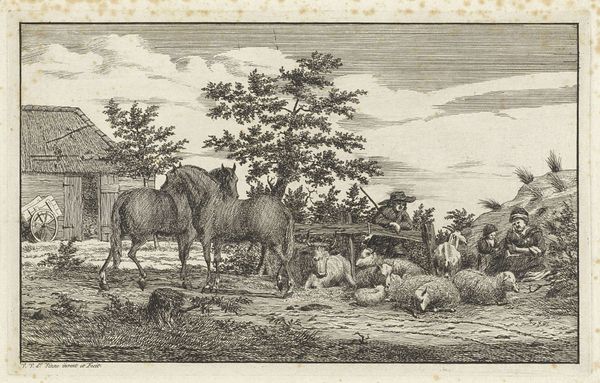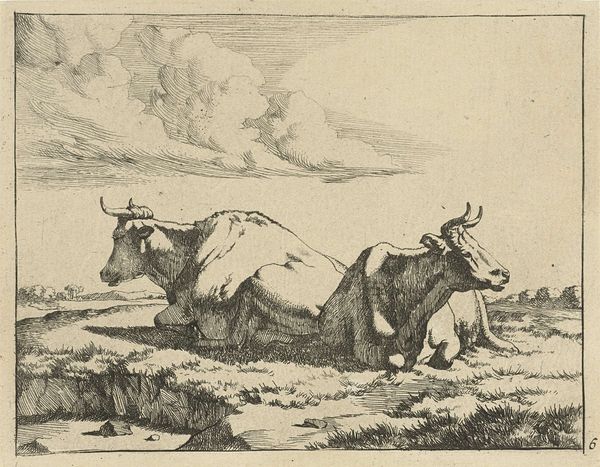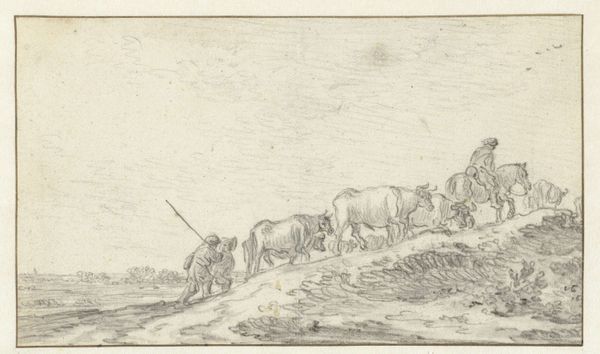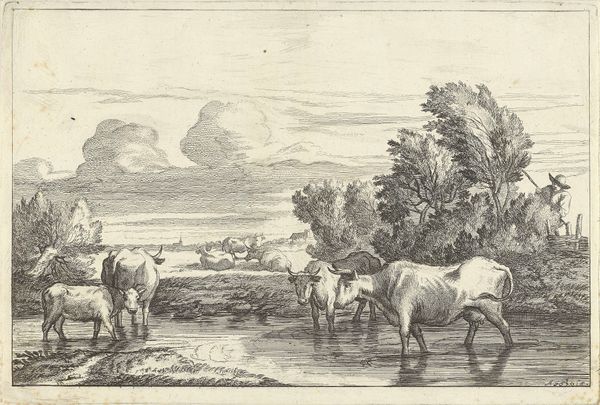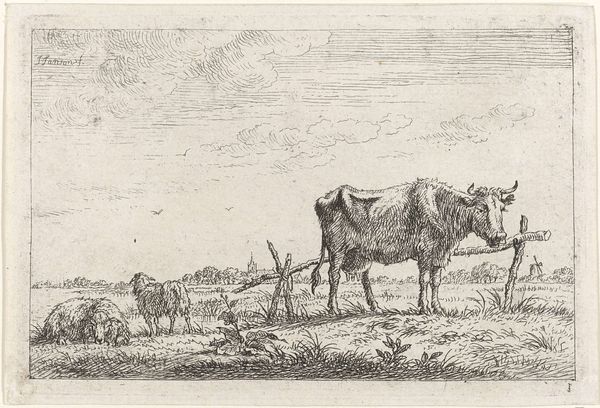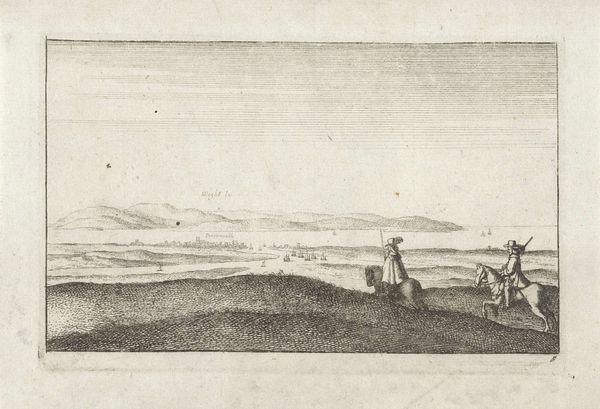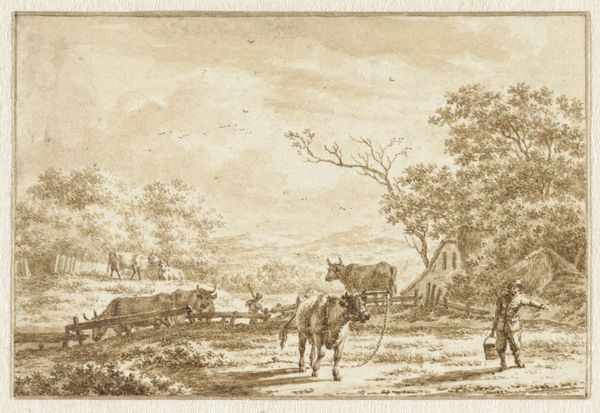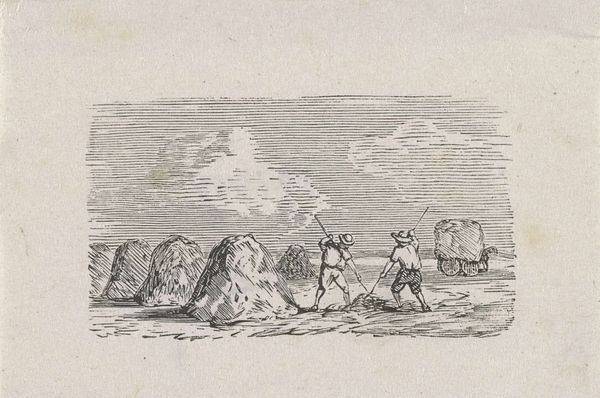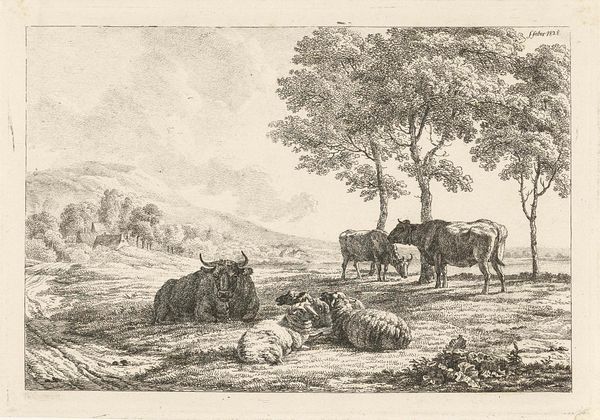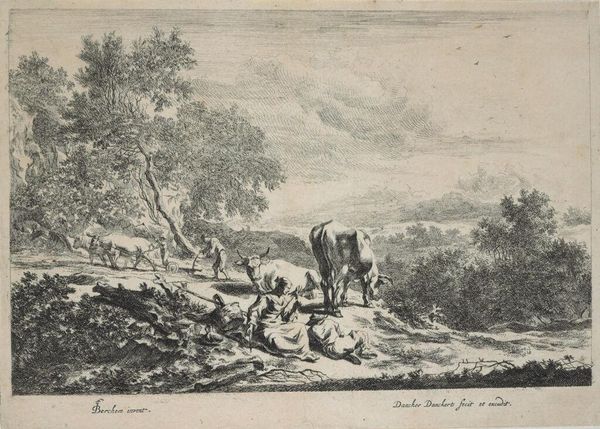
#
quirky sketch
#
pen sketch
#
pencil sketch
#
personal sketchbook
#
idea generation sketch
#
sketchwork
#
pen-ink sketch
#
sketchbook drawing
#
sketchbook art
#
initial sketch
Dimensions: height 53 mm, width 87 mm
Copyright: Rijks Museum: Open Domain
Curator: Today we're looking at "Vier koeien in een wei," or "Four Cows in a Meadow," a work by Isaac Weissenbruch from between 1836 and 1912, currently residing here at the Rijksmuseum. Editor: It’s interesting how the horizontal lines depicting the sky contrast with the rounded forms of the cows. There is an interplay of angular versus biomorphic, and a flattening effect caused by the composition. It looks more like a notation or study, perhaps. Curator: Precisely. Consider the Netherlands during Weissenbruch's time. Dairy farming was not merely an occupation but an integral component of Dutch identity, and often tied to cultural notions of stability, independence and prosperity. These images of docile cattle evoke a specific time in the 19th century, as industrialization threatened rural life. Editor: The artist’s rapid sketch style really contributes to that feeling of ephemerality, capturing not a static scene but a fleeting moment. The lack of sharp detail blurs the distinction between the land and livestock. Curator: Weissenbruch's choice to portray the animals in a meadow resonates with social values attached to pastoral life. The artwork subtly highlights human encroachment, particularly industrial and agricultural models replacing rural environments—the barely visible figure amongst the cows possibly representing a connection to laborers who had a vital role. The idyllic scene hides a sense of looming disruption. Editor: That tension certainly elevates it beyond a simple genre scene. From a formal perspective, observe the almost musicality of line and form! Note the economy with which Weissenbruch captures these voluminous creatures, so rapidly sketched but still imbued with individual characters and identities. The spatial arrangement offers us a moment frozen in time. Curator: I find the positioning and attitudes of each cow—some grazing, others reclining—indicative of a deeper narrative of the era. Perhaps speaking to leisure and work or representing social strata inherent within agrarian societies of the Netherlands. Editor: Ultimately, I see an evocative sketch that skillfully blends simplicity with nuance. Curator: I agree—viewing this pastoral illustration within its socio-historical context sheds light on significant values during a transformative period for the Netherlands.
Comments
No comments
Be the first to comment and join the conversation on the ultimate creative platform.

